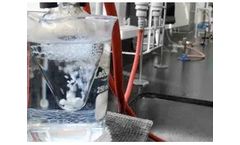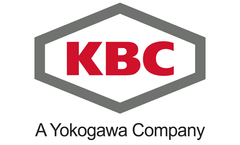Refine by
Heat Exchanger Efficiency Articles & Analysis
20 articles found
In the chemical industry, precise temperature control is crucial to ensuring efficient, safe, and cost-effective operations. Chemical processes often require heat to be transferred between substances in ways that prevent thermal damage, promote chemical reactions, and maintain safety standards. Shell and tube heat exchangers ...
For example, the thermal conductivity of C11000 copper alloy is as high as 401 W/(m·K), which makes it excellent in applications such as radiators and heat exchangers that require efficient heat conduction. In addition, other data also show that the thermal conductivity of high-purity copper is usually between 393 ...
Regular cleaning prevents the buildup of residues that can reduce efficiency. Cooling Systems: Check the coolant levels and the integrity of the cooling system. ...
The continuous pyrolysis plant features a screw feeding sealing system, which can be observed as high heat exchange efficiency and capacity. Its electrical product is also impeccably controlled. ...
The continuous pyrolysis plant carries a screw feeding sealing system, that is characterized by high heat exchange efficiency and capacity. Its electrical product is also impeccably controlled. ...
When you are looking for an efficient method for enclosure cooling, a heat exchanger is a good solution for a few different reasons. Not only is a heat exchanger energy efficient, but it allows you to maintain a completely closed loop enclosure cooling solution. The way a heat ...
Heat exchangers are crucial to many processes in the water industry, in aerobic or anaerobic digestion plant, for cooling or evaporation, and for sludge concentration. Choosing the right heat exchanger can appear daunting, and maximising productivity is ...
There are many different types of tubular heat exchanger on the market, such as annular space, double tube and multitube, as well as those with different geometries including the use of internal fins, dimples and corrugations. We have written several articles explaining why corrugated tubes are our preferred design option, but it is worth ...
The HRS R Series of scraped surface heat exchangers is ideal for multitube scraped surface installations thanks to its helical scraper system which provides the ability to provide a large surface area with a very small footprint. We have now launched a new multipass version – the RMP Series – which further improves heat transfer for challenging viscous materials. Based on the R3 ...
Thermal conductivity is significantly affected by fouling, a thin insulating layer or film that accumulates on heat transfer surfaces. In fact, a fouling layer of just one thousandth of an inch (0.001") increases system power requirements by 10%. Fouling can be caused by biofilm or suspended solid particles that settle on heat exchangers. Side stream filtration with Pathex antimicrobial filter ...
The Kenics heat exchanger provided more efficient, cost-effective processing of the chemical. ...
Power generation systems using an ammonia–water mixture instead of water as working fluid have attracted much research interest over the past 20 years, since they have a potential to convert more energy in low–grade heat source into power and to improve the power generating processes in several ways. ...
In this paper, the thermodynamic modelling of exergy loss, exergy efficiency, exergy destruction rate, environmental destruction coefficient, improvement potential, exergy destruction factor, relative irreversibility, productivity lack and exergetic factor of ground source heat pump (GSHP) system are investigated. ...
Gas-to-gas heat exchangers are increasingly being used to recover low-grade heat (or cooling) to reduce energy requirements for space heating, drying and other applications. The efficiency of heat recovery is often limited by practical considerations which could – in principle – be reduced or ...
The ecological function is optimised for an irreversible-closed Intercooled-Recuperated (ICR) gas turbine cycle using the theory of Finite-Time Thermodynamics by searching the optimum intercooling pressure ratio and heat conductance distributions among the four heat exchangers for fixed total heat exchanger ...
This study deals with evaluating the performance of an olive oil refinery plant installed in Izmir, Turkey, using Exergy, Cost, Energy and Mass (EXCEM) method, which is based on the real operational data and costs of the equipments. The most efficient equipment is obtained to be the shell and tube type heat exchanger with an exergy ...
Depending on the combinations of heat exchanger and environmental temperatures, different values of functional exergy efficiency can be obtained for the same heat transfer effectiveness. Some temperature combinations can lead to unexpected values of functional exergy efficiency. A dimensionless temperature T′ is ...
After energetic, entropic and exergetic analyses of the hot-end and cold-end heat exchangers of the engine, an adapted model of the engine, including the heat exchangers and the regenerator, is proposed to optimise the distribution of the limited heat exchangers' total area. Power generation, ...
The three rules of the pinch principle by which energy efficient heat exchanger network designs must abide. About the capital-energy trade off for new and retrofit designs. ...
.• The three rules of the pinch principle by which energy efficient heat exchanger network designs must abide.• About capital-energy trade off for new and retrofit designs.• The best way to make energy saving process modifications.• How to do multiple utility placement.• How best to integrate distillation columns with the background process.• The ...









